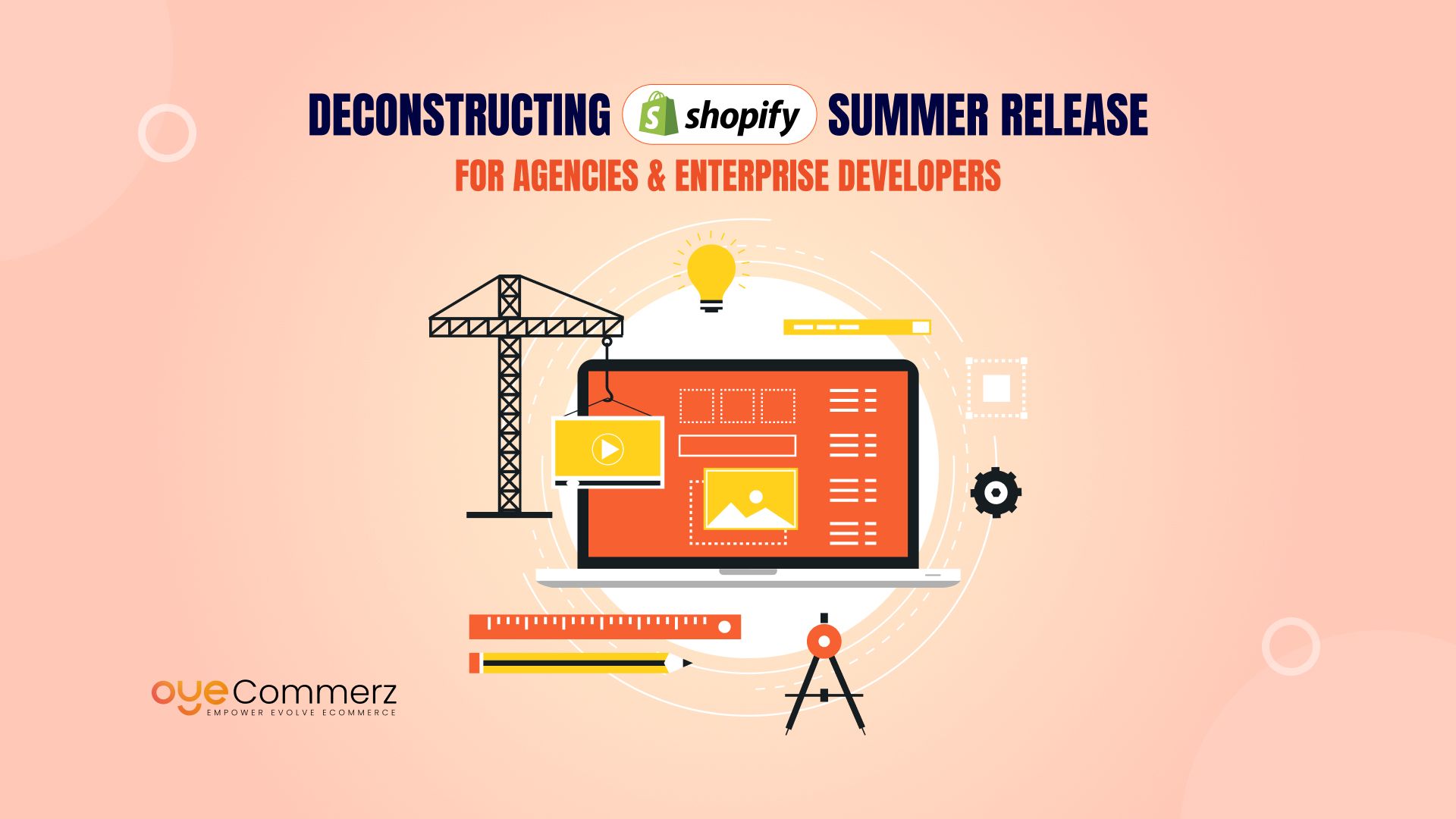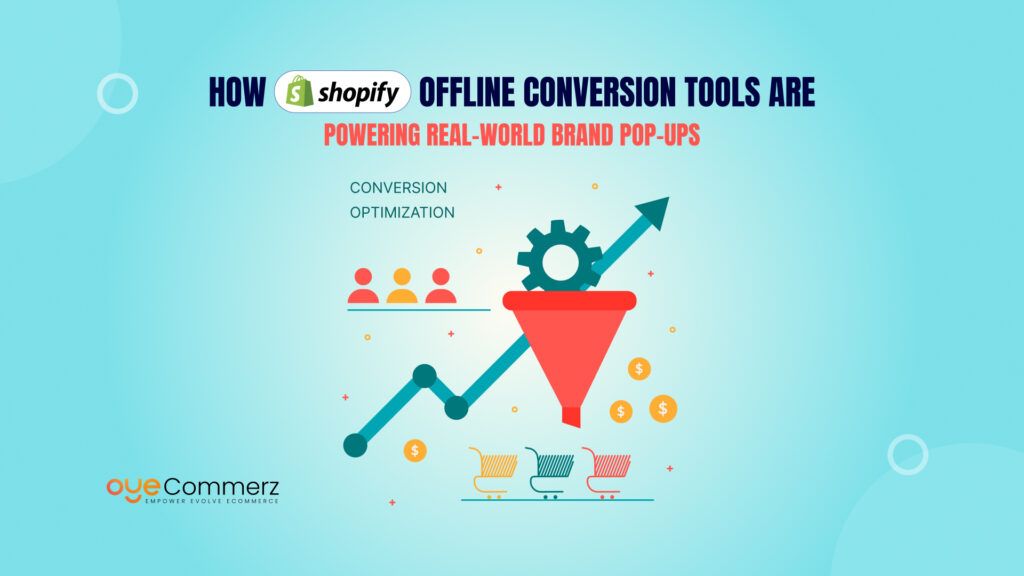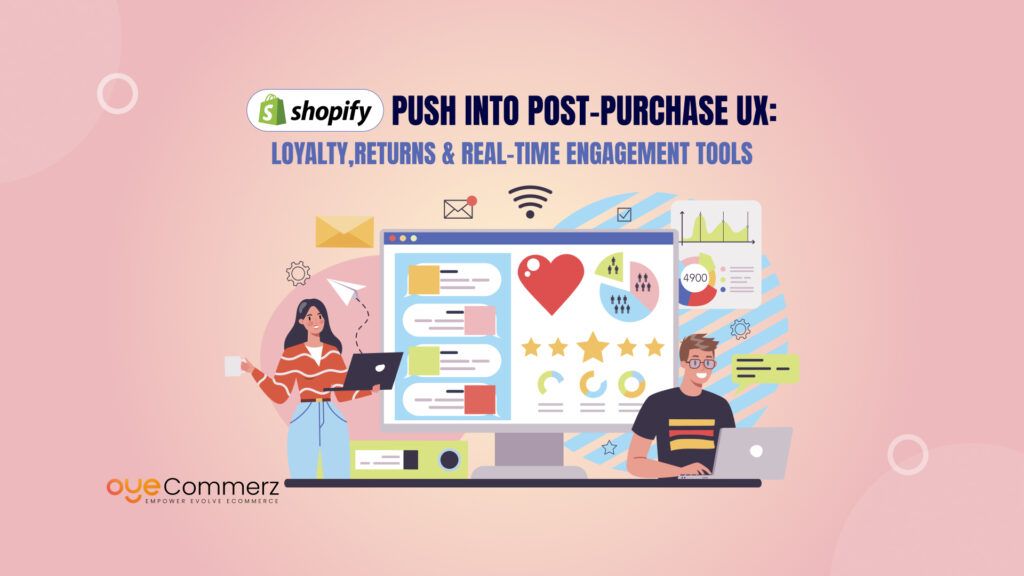Google has long dominated how consumers discover and purchase products online. But a major shift is underway.
According to a 2024 Gartner report, AI-driven commerce tools are expected to influence 30% of all digital transactions by 2026. Additionally, Shopify merchants using AI-based chat tools, including ChatGPT integrations, reported a 14% increase in conversion rates last year.
The landscape of transactional search is changing and Shopify ChatGPT Integration is at the center of this transformation.
Most product discovery and purchasing decisions still depend heavily on Google, which takes users off-platform and into a fragmented buyer journey.
Shopify’s ChatGPT integration offers a smarter, more contained alternative. It allows customers to find products, get personalized recommendations, and even complete purchases all within a seamless, AI-powered experience on the merchant’s site. This reduces reliance on Google and creates a tighter, more efficient conversion funnel.
In this blog, we’ll explore how this integration could reshape the future of transactional search, challenge Google’s dominance, and open new opportunities for e-commerce merchants.
Table of Contents
ToggleWhat Is Shopify ChatGPT Integration?
The Shopify ChatGPT Integration is a powerful AI enhancement that brings conversational intelligence directly into the Shopify ecosystem. It allows merchants to use OpenAI’s ChatGPT technology to deliver personalized, real-time interactions that guide customers through product discovery, FAQs, support, and even checkout all within the store environment.
This integration is part of Shopify’s broader initiative to make AI more accessible to merchants of all sizes. Whether through Shopify’s native AI assistant (Sidekick) or through third-party ChatGPT-powered apps, store owners can now leverage advanced natural language processing to create a more intuitive and responsive shopping experience.
Key capabilities include:
- Product Search and Recommendations: Shoppers can ask for products in natural language “Show me running shoes under $100” and get curated results instantly.
- Customer Support Automation: ChatGPT can handle common questions about shipping, sizing, and returns without manual intervention.
- Onboarding and Navigation Help: For new customers, the chatbot can guide them through the shopping experience, reducing friction and drop-off.
- Contextual Selling: The AI can upsell or cross-sell based on previous interactions, browsing behavior, and cart content.
By using Shopify ChatGPT Integration, merchants reduce their reliance on traditional search engines and third-party customer service tools. Instead, they can own the entire customer journey from the first question to the final checkout on their own platform.
This shift is not just about convenience; it’s about redefining how and where commerce happens in the AI era.
What Is Transactional Search & Why Google Leads It (For Now)
Transactional search refers to the type of online query where the user intends to complete an action most often a purchase. Common examples include searches like “buy wireless earbuds,” “best running shoes under $100,” or “order organic skincare products.” These queries signal clear buying intent, making them a valuable point in the customer journey.
For years, Google has dominated this space. Its search engine processes over 8.5 billion searches daily, with a significant portion falling under the transactional category. Through tools like Google Shopping Ads, product carousels, and integrated reviews, Google has become the default gateway between customers and online stores.
This dominance is built on three pillars:
- Ubiquity: Consumers instinctively turn to Google when they’re ready to buy.
- Ad-Driven Discovery: Google’s ad ecosystem puts brands in front of high-intent shoppers but at a cost.
- SEO Dependency: Merchants must constantly optimize their sites to rank well organically, which can be resource-intensive and unpredictable.
However, the Shopify ChatGPT Integration is beginning to challenge this model. By embedding AI-driven search and recommendation capabilities directly into Shopify storefronts, it reduces the need for users to leave the site to conduct product research or comparison. Instead of relying on Google, shoppers can now get personalized answers and recommendations inside the store itself.
This shift is more than technological it’s behavioral. When buyers feel they can get trusted guidance and product discovery without leaving a Shopify store, the traditional role of Google in transactional search begins to weaken.
PAS Breakdown: The Disruption Begins
E-commerce brands are caught in a constant struggle to drive qualified traffic and convert visitors into buyers. With millions of businesses competing for visibility on Google, it’s harder and more expensive than ever to stand out. For many, customer acquisition depends on a mix of paid ads, SEO, and marketplaces that charge fees or control the buying journey.
This creates an unsustainable loop. Brands invest heavily in search rankings or ad campaigns, only to lose control once the customer lands on a third-party page or worse, gets distracted by a competitor in the same search results. The customer journey becomes fragmented, inefficient, and costly. Meanwhile, consumer expectations are evolving. Shoppers want speed, convenience, and personalized help without having to hop between multiple platforms.
The Shopify ChatGPT Integration breaks this pattern by keeping the customer journey inside the Shopify ecosystem. Instead of directing traffic to external platforms like Google for discovery and comparison, merchants can use AI to meet those same needs in real-time, on-site. Customers can ask questions, explore options, and complete purchases within one intelligent, uninterrupted flow.
This isn’t just an improvement in user experience it’s a strategic shift. By reducing reliance on external search engines, Shopify stores gain more control over the buying process, retain customer attention longer, and increase conversion rates.
As AI becomes a more trusted part of the shopping experience, the lines between search, support, and sales begin to blur giving Shopify merchants an edge in the battle for consumer attention.
How Shopify ChatGPT Integration Is Changing Buying Behavior
Online shopping is no longer just about browsing categories and reading product descriptions. Today’s consumers expect intelligent, real-time assistance something that mirrors an in-store experience, but faster and more personalized. This is where the Shopify ChatGPT Integration is making a clear impact.
By embedding conversational AI into the shopping experience, Shopify is redefining how consumers discover, evaluate, and purchase products. Instead of relying on traditional site navigation or going back to Google to search for alternatives, customers now engage directly with an AI assistant that understands their intent and offers tailored product suggestions on the spot.
Here’s how that’s changing behavior:
- From Browsing to Asking: Shoppers are starting to use natural language to interact with stores. Instead of clicking through filters, they might type “I need a waterproof jacket for hiking under $150.” The AI responds instantly with curated options.
- Fewer Distractions, Higher Conversions: Since the assistant provides answers and product recommendations within the store, there’s less reason for customers to leave and search elsewhere. This lowers bounce rates and increases the chances of completing a purchase.
- Personalized Decision-Making: The ChatGPT integration learns from user interactions and adapts to deliver smarter responses like suggesting matching items or highlighting what others bought with similar products.
- Always-On Support: Whether it’s helping with product comparisons, sizing questions, or shipping info, the AI assistant is available 24/7, offering instant clarity during key decision points.
With the Shopify ChatGPT Integration, the shopping journey becomes more conversational and more contained. It empowers merchants to guide customers through the funnel without relying on external platforms. This subtle but powerful shift is encouraging consumers to trust the storefront itself as both a product source and a decision engine.
As this behavior becomes more common, it opens up new opportunities for businesses to capture and convert intent directly before Google ever enters the picture.
For Beginners – What This Means If You’re New to E-commerce
If you’re just starting out in e-commerce, understanding tools like the Shopify ChatGPT Integration can seem overwhelming. But in reality, this technology is making it easier not harder for new merchants to succeed online.
Traditionally, launching an online store required not only setting up products but also learning how to drive traffic through SEO, ads, and social media. It also meant dealing with customer questions, managing returns, and trying to convert browsers into buyers all with limited resources.
Here’s how the Shopify ChatGPT Integration simplifies that process:
- Built-in Customer Support: You don’t need to hire a full team to answer customer questions. ChatGPT can handle common queries instantly, like “What size should I get?” or “When will this ship?”
- Smarter Product Discovery: Shoppers can ask for what they want in plain language, and the AI shows them relevant products. This means your customers find what they’re looking for faster even if your store has hundreds of items.
- No Need for Advanced Technical Skills: The integration is designed to work easily with your Shopify store, either through native tools or simple third-party apps. You don’t need to be a developer to benefit from it.
- Higher Chances of Conversion: Because customers get immediate help and personalized recommendations, they’re more likely to make a purchase even if you’re a brand-new store with no prior reputation.
- Lower Marketing Dependency: Instead of relying solely on Google or social media ads to drive sales, you create a stronger on-site experience that keeps shoppers engaged and ready to buy.
For new store owners, the Shopify ChatGPT Integration is not just a feature it’s a competitive advantage. It helps level the playing field, allowing you to offer an experience that feels personalized and professional from day one.
Starting an online business is hard, but with the right tools, it doesn’t have to be complicated. This AI integration is one of those tools designed to give new merchants a real head start.
Technical Deep Dive – ChatGPT + Shopify = Closed-Loop Conversion Funnel
At the core of the Shopify ChatGPT Integration is the fusion of advanced Natural Language Processing (NLP) with the power of e-commerce, creating what can best be described as a closed-loop conversion funnel. This technical synergy transforms how customers interact with online stores, driving higher engagement and streamlined purchases.
Natural Language Processing (NLP) Meets E-commerce
ChatGPT leverages NLP to understand and interpret user queries expressed in everyday language. This allows shoppers to bypass traditional keyword searches and instead communicate their needs conversationally. For example, a customer might type, “I need a black leather jacket for winter under $300,” and ChatGPT comprehends the intent, context, and relevant filters to deliver precise product recommendations instantly.
This conversational interface improves product discovery by eliminating guesswork, reducing friction, and making navigation intuitive even for first-time visitors.
How ChatGPT Creates Intelligent Product Search and Navigation
Through deep integration with Shopify’s product catalog and customer data, ChatGPT powers smart search capabilities that go beyond simple keyword matching. It dynamically filters inventory based on price, availability, customer reviews, and even style preferences.
Additionally, ChatGPT can assist with:
- Guided selling by asking clarifying questions (“Do you prefer a fitted or loose jacket?”)
- Cross-selling and upselling based on user selections and purchase history
- Real-time inventory updates to avoid recommending out-of-stock items
This creates an AI-driven shopping experience tailored to individual customer journeys, boosting conversion rates and average order value.
API Integration Examples and Developer Tools
Shopify offers APIs and developer tools that enable seamless ChatGPT integration:
- Storefront API: Facilitates dynamic queries and mutations to update the shopping cart or fetch product details in real-time.
- Admin API: Allows for managing product data, inventory, and customer profiles used by ChatGPT to personalize recommendations.
- Webhooks: Trigger notifications or actions based on customer interactions with the chatbot, enabling automated workflows like order confirmations or support tickets.
Developers can also leverage OpenAI’s API to customize and fine-tune the ChatGPT model for their specific storefront needs, ensuring the AI assistant aligns perfectly with brand voice and product offerings.
Data Ownership and Privacy Advantages Over Google
Unlike Google’s transactional search, where most user behavior and data reside within Google’s ecosystem, the Shopify ChatGPT Integration ensures merchants retain full ownership of their customer data. This has several key advantages:
- Privacy Compliance: Merchants can better control compliance with regulations like CCPA and GDPR.
- Customer Insights: Direct access to interaction data allows deeper analysis for personalized marketing and inventory decisions.
- Security: Data remains within the Shopify platform and connected apps, reducing exposure to third-party data harvesting.
This closed-loop approach to data not only strengthens trust with customers but also empowers merchants to make smarter, data-driven business decisions.
Contact to Migrate your Site to Shopify Now
Comparison – Shopify ChatGPT Integration vs. Google Transactional Search
To better understand the shift in digital buying behavior, it’s important to compare how traditional transactional search via Google stacks up against the Shopify ChatGPT Integration experience.
The key takeaway: Shopify ChatGPT Integration gives merchants more control, reduces steps in the buying process, and keeps customers engaged within their own ecosystem. In contrast, Google transactional search relies on external journeys, which often introduce friction, competition, and additional costs.
As AI adoption grows, this direct, intelligent shopping experience is likely to become the preferred path not just for merchants, but for consumers as well.
Why Now Is the Right Time to Migrate to Shopify
The e-commerce landscape is changing fast and the businesses that adapt early are the ones positioned to lead. With tools like the Shopify ChatGPT Integration, Shopify is no longer just a storefront platform; it’s becoming a complete selling ecosystem that empowers merchants to own the customer journey, increase conversions, and reduce reliance on third-party platforms like Google.
Whether you’re on Magento, WooCommerce, BigCommerce, or a custom-built solution, now is the time to evaluate your store’s future. Shopify’s AI features, scalability, app ecosystem, and low barrier to entry make it ideal for both new and growing brands.
Here’s what you gain by switching to Shopify now:
- Access to advanced AI tools like ChatGPT without custom development
- Streamlined checkout and optimized mobile experience
- Control over your entire marketing and sales funnel
- A growing ecosystem of integrations, analytics, and automation tools
Let Oyecommerz Help You Make the Move
Migrating platforms can feel overwhelming but it doesn’t have to be. Oyecommerz specializes in Shopify migration services, helping brands of all sizes seamlessly transition from legacy platforms to high-performance Shopify stores.
From data migration and store redesign to setting up advanced features like the Shopify ChatGPT Integration, Oyecommerz ensures your business is fully prepared to capitalize on the AI-powered future of e-commerce.
If you’re ready to reduce complexity, increase conversion, and stay ahead of the competition, now’s the time to switch.
Conclusion
The Shopify ChatGPT Integration represents a significant shift in how e-commerce merchants engage with customers and compete in the digital marketplace. By embedding advanced AI-driven conversational capabilities directly into Shopify stores, merchants can offer personalized, efficient, and seamless shopping experiences that reduce reliance on traditional search engines like Google.
This integration not only enhances product discovery and customer support but also creates a closed-loop conversion funnel that keeps buyers engaged and increases the likelihood of purchase all while giving merchants full control over their data and customer relationships.
As AI continues to evolve, the importance of tools like Shopify’s ChatGPT integration will only grow. For merchants looking to future-proof their businesses and gain a competitive edge, adopting this technology is no longer optional it’s essential.
Whether you are new to e-commerce or an established brand, leveraging the Shopify ChatGPT Integration can transform how you connect with your audience, drive sales, and build lasting customer loyalty in an increasingly AI-driven world.
Frequently Asked Questions
Yes, ChatGPT can be integrated with Shopify through apps or Shopify’s native AI features, enabling conversational shopping, customer support, and personalized product recommendations directly on your store.
You can connect Shopify to Google by using the Google Channel app, which syncs your products with Google Merchant Center, allowing you to run Shopping ads and appear in Google’s product search results.
While you can’t directly embed a full Shopify store into Google Sites, you can add Shopify Buy Buttons or product widgets to showcase and sell products on a Google Sites page.
Yes, Shopify is highly scalable and user-friendly, making it ideal for small businesses that want an easy-to-manage platform with access to powerful sales and marketing tools.
It enhances customer experience by providing real-time, AI-driven assistance, improves product discovery, increases conversion rates, and helps merchants retain full control over customer data and interactions.




